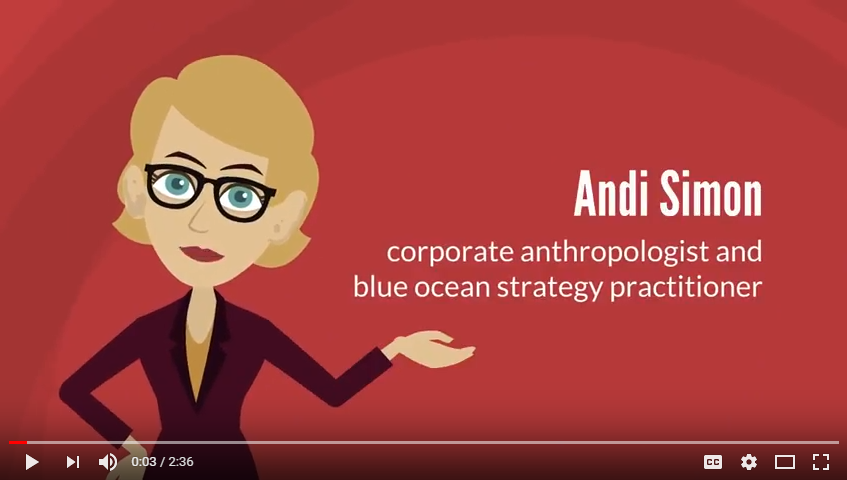You must be reading a lot about what everyone is getting set up to do in the next year. We thought we would share with you some of the trends we are seeing in our trenches as we are out in the field working with clients or conducting CEO workshops. Give some thought to how these might be relevant to you and your growth strategy, and as always, please share your ideas with us. We’d love to hear from you.
What are our clients’ growth and innovation goals for 2018?
Here are some of the ones we’re seeing:
1. Redesigning the business. One client is repositioning their services firm for the growing demand among their clients and prospects to be better able to solve complex business needs. This is much more than what they used to do for them. Increasingly, they are finding that their clients want a partner with expertise who helps them become more agile in fast-changing times.
It doesn’t matter if it is CPA firm or a law firm or a design firm—limited scope of services seems to be out. Broader capabilities are becoming essential. If you cannot do it yourself, you need to bring in collaborators or freelancers or partners and operate as a general contractor. In today’s market, you never want to say you cannot do something (because if you do, clients/prospects will go elsewhere).
2. Culture change has become essential. As culture change experts, we work with and provide coaching for a number of executives, both in the U.S. and globally. We are seeing a big change in their realization that culture is “everything” or at least “a lot of the things.”
In several cases, they have been put in charge of changing their organizations, and what they have found is that a top-down controlling culture of the past is incompatible with the innovation, agility and creativity that is required of their employees.
What is also clear is that their employees are reluctant to change their ways in order to become part of a more engaged and innovative culture. These leaders realize that culture change has moved from the sidebar, “nice to do someday,” to the thing that is essential to do right now or they will not be able to fulfill their business missions.
3. Creating a new strategy—maybe even a Blue Ocean Strategy®. We are taking several of our clients through a major strategy change and they are looking to Blue Ocean Strategy to help them find the customers who are not using them today but should be. From colleges to manufacturing companies to high tech system designers, these clients realize that the old Michael Porter strategy of Five Forces may no longer work as their markets have become over-saturated with competition.
With one of our clients, they really aren’t sure why their sales team is not more successful bringing in new clients. They always used to be but their buyers have retired. And the new breed of buyers is not responding to the old sales process of phone calls and relationship building. They need a new strategy!
With another client, they have been growing fast but they’re seeing a new customer emerge who is asking for very different solutions than what they have delivered in the past. They are realizing that they must be more agile to adapt to changing customers and changing markets. The old way of doing things is no longer the best way. Once again—time for a new strategy.
This blog, How Blue Ocean Strategy® Helps You Find (and Convert) Nonusers, can take you deeper into Blue Ocean Strategy thinking. Then check out these videos.
And enjoy this one:
4. The GIG economy is everywhere. Today, our clients and other companies are growing by embracing the gig economy in ways they had not done before. They have stopped employing full-time employees. They are outsourcing services and then turning around and insourcing them. People have become more nimble trying to find the right solution at the right price point. Their HR folks find that “just in time” freelancers are offering excellent quality at a fair price with greater flexibility.
In addition, these clients are beginning to act like general contractors, assembling teams that are “white labeled” to appear as they are part of the company.
Even at SAMC, we have been engaged by several companies to become part of their team on projects.
5. Women are starting and building great businesses. We know that great numbers of women have been opening businesses since the 2008 Great Recession. As noted in 2017’s American Express State of Women-Owned Business Report, “Women-owned businesses now account for 39% of all U.S. firms, employ 8% of the total private sector workforce and contribute 4.2% of total business revenues.”
But it’s not just that women are building businesses. They’re building them differently, creating very different cultures with high levels of collaboration, empowerment and processes. As one woman CEO told us, she loved creating a company that offers a more blended life for her employees, balancing home and work seamlessly. They are not two different worlds. And she has recognized this in her clients’ companies as well.
Our podcast with Stephanie Breedlove talks at length about how she created her successful enterprise. Take a listen!
What challenges do they face in achieving these goals?
The key challenges seem to focus on three major areas:
1. People who are really good at tasks that are familiar to them hold onto them long after they have any value. Learning new ways to engage with each other or with clients is difficult. Often they agree to a change plan but are unsure how to actually act in new ways. This is a big area of concern for companies because finding new employees is as hard as changing the ones they have now.
2. They have to create demand among current and future clients. Creating demand for new products, services or solutions is never easy. Clients are no different than employees. Their habits take over and they stay with what they have always known and done—even when it is no longer of great value.
3. Implementing new cultures, retraining people and launching new processes all take time while draining resources from revenue-generating activities. And there is the mixed blessing—change is a challenge, even if it sets up the company for future expansion.
If you would like to learn more about this thing called “culture” and why it trumps everything else, listen to our podcast with Gustavo Grodnitsky.
Are these growth plans inspired by trends?
Whenever we work with new clients, we always begin by seeing how they are experiencing the trends. Whether it is the need for culture change or for shifting to freelancers, we like to see their problems and stall points from a bigger-picture perspective.
Next, we conduct visual awakening research with our clients’ clients to better understand how they are using our client’s company. Then we always try to build solutions backwards, from the customer to the company. This in-depth research is very insightful for our clients because when they hear what their clients are struggling with, it is easier to see patterns so they can change accordingly. Most importantly, it is healthy to change just a bit ahead of the clients who are changing.
This blog might help you see how this all comes together: 5 Best Tools to Find Your Blue Ocean Strategy.
How does SAMC help our clients overcome these challenges?
Our consulting business is all built around helping companies change. As corporate anthropologists, we are well aware of how wedded people are to their cultures, habits and beliefs, which is why our change processes are specifically designed to help people do what they hate to do—Change.
For one of our current clients, we are helping them retrain their staff, refine their strategy and build a tactical plan to implement the new direction. They are changing their compensation plans so that staff can benefit from new initiatives. And their internal communication is being over-emphasized to keep staff talking about successes and how to cope with stress associated with changing behaviors.
For another client, we are creating a Blue Ocean Strategy with their entire organization. As we have found, it is far more effective to get engagement and commitment if all employees are part of the discovery process and help formulate the plan itself. (Otherwise, it’s too easy to “shoot the consultants” when the plan gets stymied or has to be redirected.)
Are you worried about coming changes? Give us a call, we can help.
At Simon Associates Management Consultants, we specialize in helping businesses adapt to the changes of today and tomorrow by stepping out and seeing their organizations with fresh eyes. This is when new opportunities present themselves, when you have the eyes to see them. To learn more about how our change process can put you on the path to growth, please contact us for a $100 1-hour consultation. We’ll help you discover what new possibilities might be waiting for you.
From Observation to Innovation,
Andi Simon, Ph.D.
Corporate Anthropologist | President
Simon Associates Management Consultants
Info@simonassociates.net
@simonandi
Check out my latest Huffington Post article





